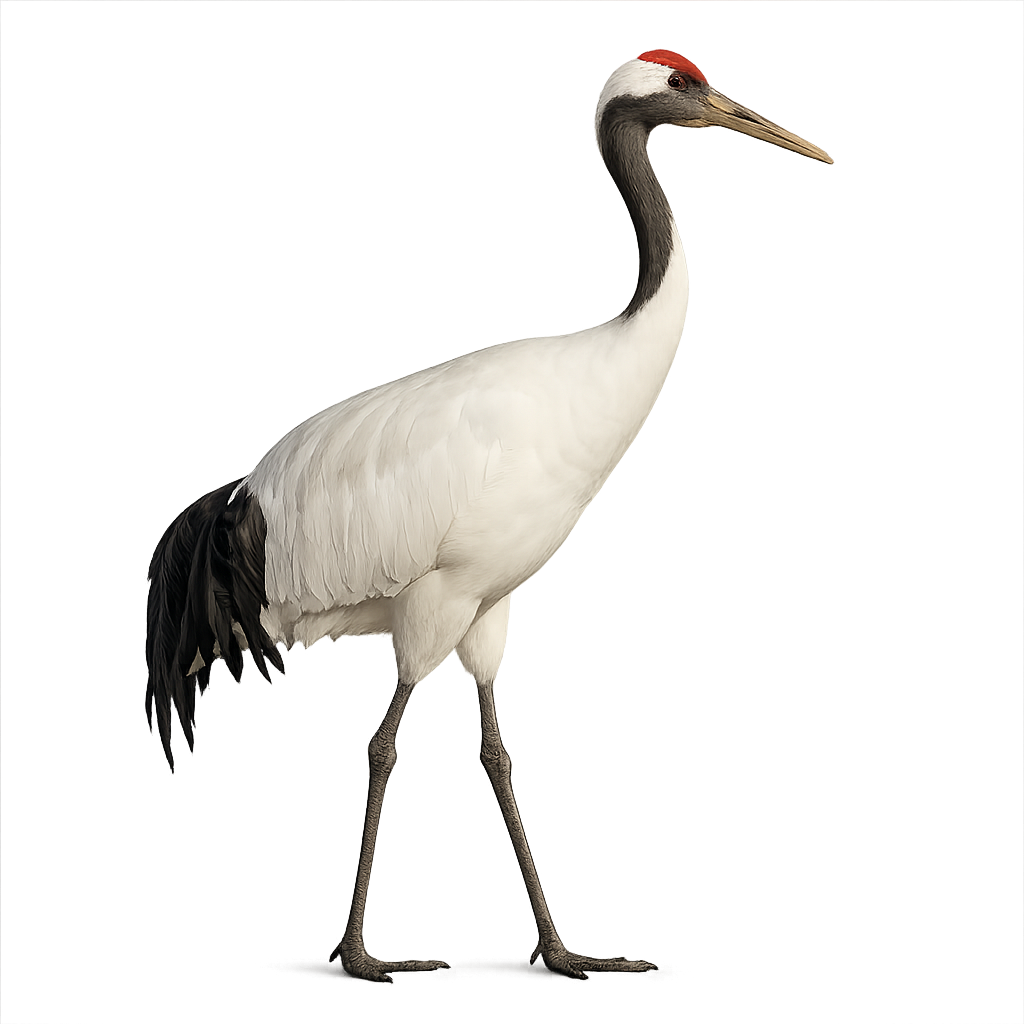Your wildlife photography guide.
Explore the japanese crane in detail, study its behavior, prepare your shots.
Where to observe and photograph the japanese crane in the wild
Learn where and when to spot the japanese crane in the wild, how to identify the species based on distinctive features, and what natural environments it inhabits. The WildlifePhotographer app offers tailored photography tips that reflect the japanese crane’s behavior, helping you capture better wildlife images. Explore the full species profile for key information including description, habitat, active periods, and approach techniques.
Japanese crane
Scientific name: Grus japonensis

IUCN Status: Endangered
Family: GRUIDAE
Group: Birds
Sensitivity to human approach: Suspicious
Minimum approach distance: 50 m
Courtship display: March to April
Incubation: 30-32 jours
Hatchings: April to May
Habitat:
Wetlands, marshes, rice paddies, and deciduous forests of Japan and Eastern Russia
Activity period :
Primarily active during the day, with peak activity in the morning and late afternoon.
Identification and description:
The Japanese Crane is a large migratory bird, recognized for its elegant silhouette and spectacular courtship dances. It stands about 140 cm tall, with a wingspan of 2.4 to 2.8 meters, and weighs between 6 and 10 kg. Its plumage is mainly white, with black feathers on its back and wings, and a distinct red head, which is often featherless. It also has black patches around its eyes. The Japanese Crane primarily inhabits marshes, rice fields, and wetlands in Japan, but it is also found in China and Russia. It mainly feeds on aquatic plants, seeds, small insects, and occasionally small fish. This species is famous for its ritual courtship dances, during which the partners engage in graceful jumps and movements. The Japanese Crane is an endangered species due to habitat loss, pollution, and poaching. Conservation efforts have been made to protect its breeding habitats and resting areas.
Recommended lens:
300 mm – adjust based on distance, desired framing (portrait or habitat), and approach conditions.
Photography tips:
To photograph the Japanese crane, a telephoto lens is essential to capture its graceful silhouette and courtship dances.
Soft morning or evening light is ideal for beautiful photos.
Be patient and discreet, as these birds can be quite sensitive to human disturbance, especially during their breeding season.
IUCN status: Endangered. Respect its habitat and minimize disturbance during the breeding season.
The WildlifePhotographer App is coming soon!
Be the first to explore the best nature spots, track rutting seasons, log your observations, and observe more wildlife.
Already 1 431 wildlife lovers subscribed worldwide

